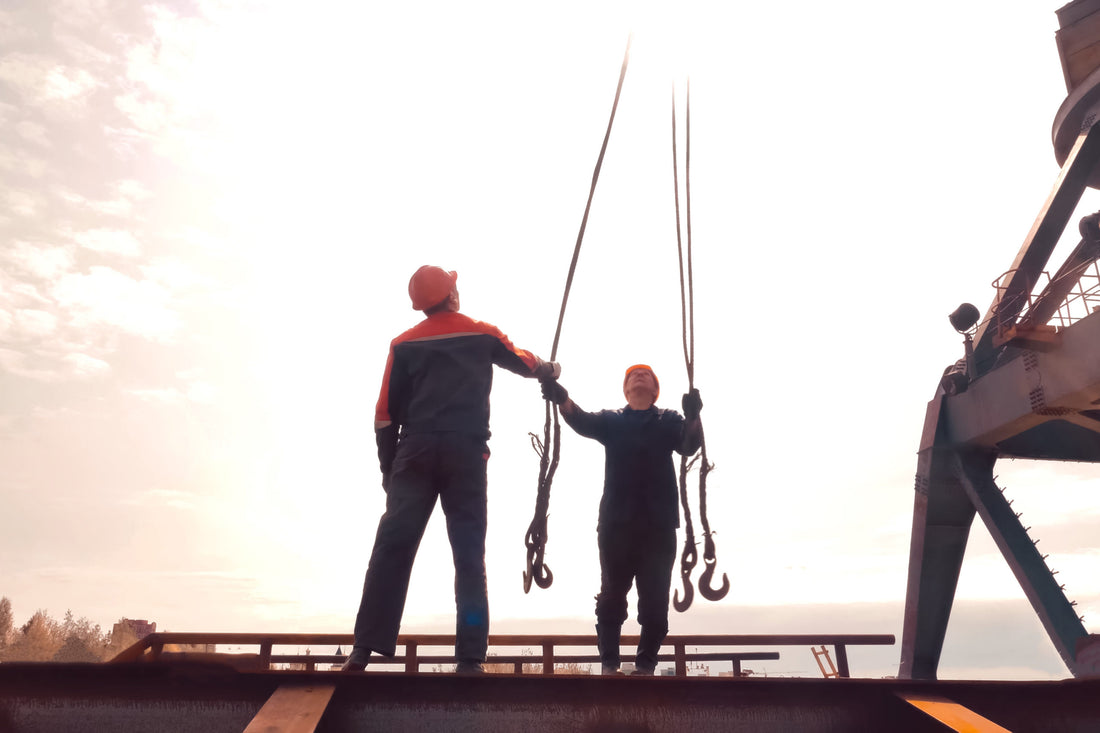
What is Sling Protection, What are the Different Types of Slings, & How to Protect Them
Are you constantly having to buy new lifting slings, or finding that your slings keep getting damaged? Are you noticing that improper use of the load or load damage is often caused by the sling itself? These issues are related to one of the most common lifting problems – lack of proper sling protection.
Luckily, we have a few tips on how to improve the endurance and longevity of your slings. In this blog, we'll explain what is sling protection, when slings require protection, and the best sling protection products.
What is Sling Protection?

Sling protection is a common term in the lifting and rigging industry. Just like adding a screen protector to your phone, there are sling protection products that can protect your slings from sharp corners and edges.
We need to ensure the lifting sling is not cut or abraded during the lift, and the load is secured. We're able to achieve that through products that support the durability of the lifting slings.
When researching sling protection products, it’s important to understand that some products are good for preventing abrasions while others are good for resistance to cutting. It’s also critical to know that the most common sling protection materials are polyester or nylon webbing, Kevlar, rubber, leather, and wood. While learning about your slings or the slings you wish to get, make sure to know what application you are using the sling for as well as the physical properties of the load and sling protection products.
We're emphasizing the importance of sling protection producs because it’s typically less expensive to replace sling protection products multiple times than to replace the lifting sling.
When do Slings Require Protection?

All types of lifting slings like nylon, polyester, wire rope, and chain must be protected from edges, corners, and protrusions. You can use products like corner guards, sleeves, reinforced eyes, and wear pads to help your slings. We also carry a line of Straightpoint Load Monitoring Loadcells to precisely measure and safely monitor the tension of loads involving wire rope, guy wire, synthetic rope, shackles, and more.
While all types of lifting slings require protection from sharp corners and edges, it’s common to use sling protection products to a synthetic sling like round slings and web slings. This is because the nylon and polyester fibers of a synthetic sling are more susceptible to cuts, tears, and abrasion than stronger sling materials like wire rope or chain. In fact, the cutting of synthetic slings during use is the number one cause of sling accidents.
The sling can make contact with the load or hardware:
- Around any lift points like load edges, hoist rings, and eye bolts
- Around the crane hook, shackle, and master link.
- On load edges that could be above the hookup points
What Happens When I Don’t Protect My Slings?

There are several ways slings could be destroyed if you don’t use sling protection products. Without the usage of sling protection products, there is potential for:
- Injury or loss of life
- Higher turnover of slings, especially synthetic ones
- Major damage to the sling, load, and around the load's surroundings if the sling is cut, and the load is dropped
- Damage caused to the load itself from lack of protection, especially when using wire rope and chain slings which can exert crushing forces on a load
As explained above, when you're not using the proper sling protection, it can result in a dropped load or scratching and damaging it. This can be dangerous as this could result in injury, dismemberment, or loss of life.
In addition to that, if you’re not protecting your slings, you’re creating a higher turnover in slings and this will result in higher equipment costs. To learn more about what lifting slings you should use for the right job, read 3 Factors to Consider When Choosing Lifting Slings.
How Do Sharp Edges or Corners Damage Slings?

Edges can damage different types of slings in several different ways.
If you’re using chain slings, the edges can cause nicks and gouges, crushed links, and bent or twisted links. When using wire rope, the corners could damage broken wires, kinks, or doglegs. Lastly, nylon and polyester slings can be cut or abraded easily.
If your sling isn't protected and it gets damaged, it's more expensive to replace the sling than the sling protection product. It is much more cost-effective to replace the sling protection rather than replacing the sling itself.
Nylon and polyester slings can be easily confusing as they have a few similarities. To understand which web sling you should get, read Polyester Slings vs Nylon Slings: Which Web Sling Type is Better?
Tackle the Toughest Lifting Jobs with High-Quality Rigging Hardware
We know the importance of quality when it comes to lifting supplies. We carry a variety of rigging hardware, as well as lifting beams and spreader bars that are designed to lift heavy loads safely and efficiently.
Need a custom lifting sling? We can do that. We’ll customize a lifting sling to meet your specific needs.
Curious about Straightpoint products and how they work? Read more information about them below!
Do You Know How Much That Weighs? Straightpoint Load Cells Do
Compression Type Load Cells: Wireless vs. Wired
